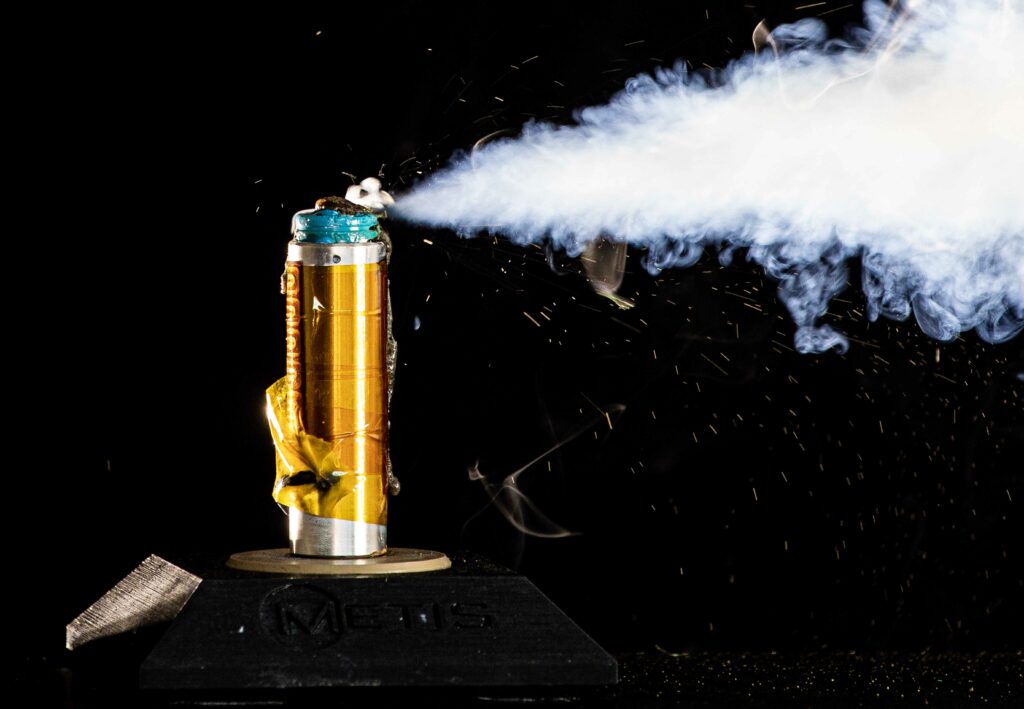Tests find Metis battery sensor detects thermal runaway faster than others

(Image courtesy of Metis Engineering)
Metis Engineering has shared details of a publication by Sandia National Laboratories in the Journal of the Electrochemical Society. Tests found the Cell Guard sensor detected a thermal runaway incident seven minutes faster than other reported evaluations.
The Cell Guard sensor provides accurate and detailed information on the health of a lithium-ion battery pack to improve longevity. It can detect cell venting, which is an early sign of catastrophic failure – reducing the risk of fire.
In electric vehicles (EVs) and energy storage systems (ESS), the data provided by Cell Guard can be used to crosscheck with other inputs, such as cell temperature, to check for cell venting. The sensor relays this data over its configurable CAN interface, which can be used to warn the driver of a problem. The sensor can also trigger the process to cut the circuit to the battery pack, giving it an opportunity to cool down, with the aim of preventing thermal runaway.
Joe Holdsworth, managing director of Metis Engineering, said: “We are delighted that our Cell Guard sensor has proven its mettle against two competitors in the market in an entirely independent and third-party test. Not only did our sensor detect a thermal incident in under 60 seconds, [but] the CAN data it provides could be used to inform the driver to stop and evacuate the vehicle.
“The report states… a full, seven-minute warning from the early detection of degradation markers prior to a thermal event would enable electric buses to stop, pull over and conduct a safe evacuation, as per the Global Technical Regulation on Electric Vehicle Safety No. 20.”
Sandia National Laboratories tested the Cell Guard sensor, along with two competitors: one is designed mainly for ESS and is much more expensive; the other, designed for EVs, only looks for hydrogen. In one test the hydrogen sensor took seven minutes longer to register that there had been a thermal event, by which time thermal runaway was advanced.
Cell Guard monitors a range of environmental parameters required to ensure the battery continues to operate in optimum conditions. It detects volatile organic compounds (VOCs) emitted by cell venting and pressure change. The sensor can monitor the dew point in the pack and be used as an input into the batteries’ thermal management to avoid cooling them to the point where condensation could settle on the terminals, leading to shorting and thermal incidents. If humidity levels are high this can indicate whether water ingress has occurred, and Cell Guard’s humidity sensor can detect this.
An optional, three-axis accelerometer records shock loads up to 24g and impact duration of the battery pack. This information can provide insight into the battery’s condition for repurposing and recycling.
Cell Guard was developed using ISO26262 processes and is certified to ISO Automotive Standards.
Click here to read the latest issue of E-Mobility Engineering.
ONLINE PARTNERS






















